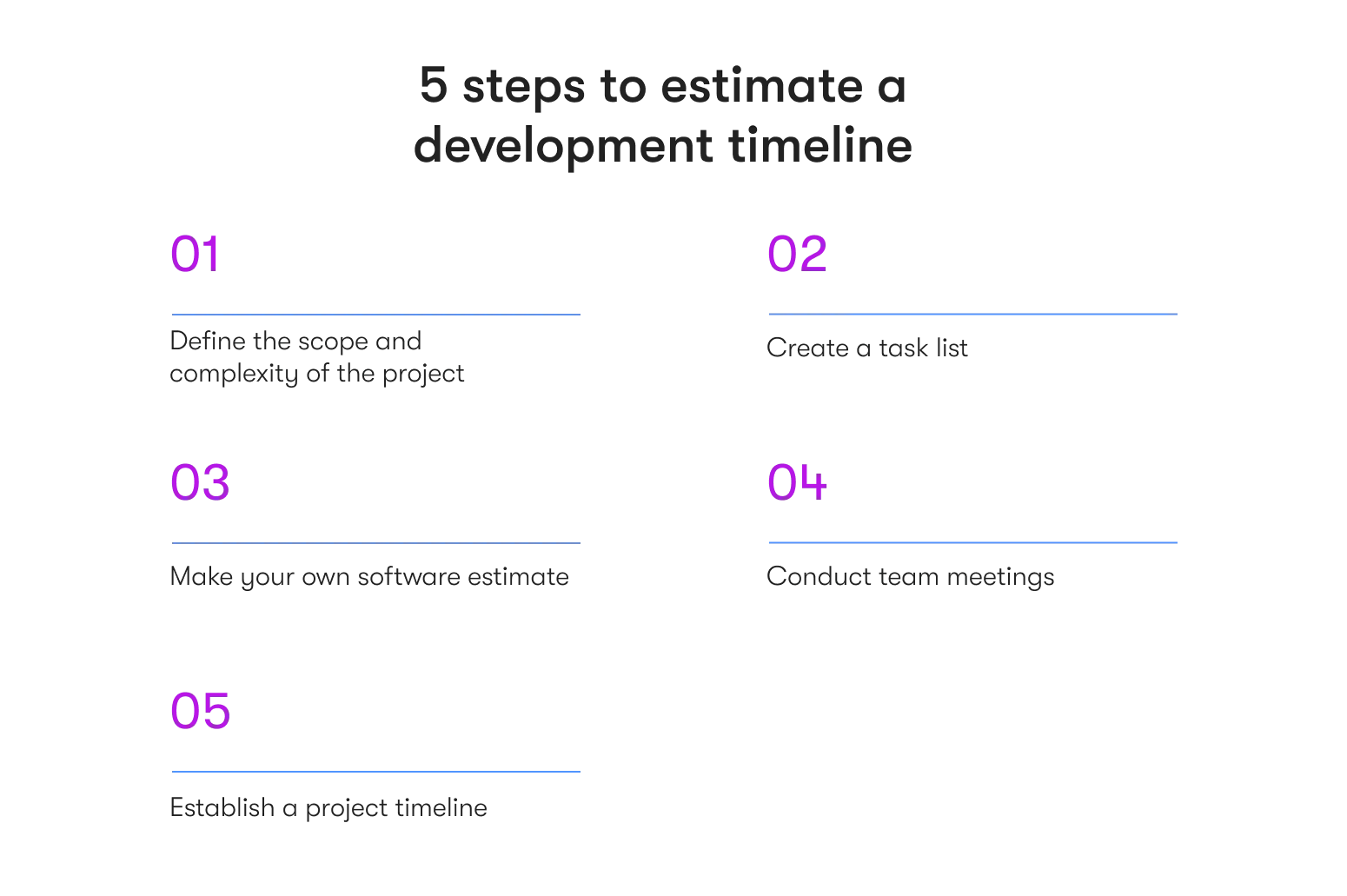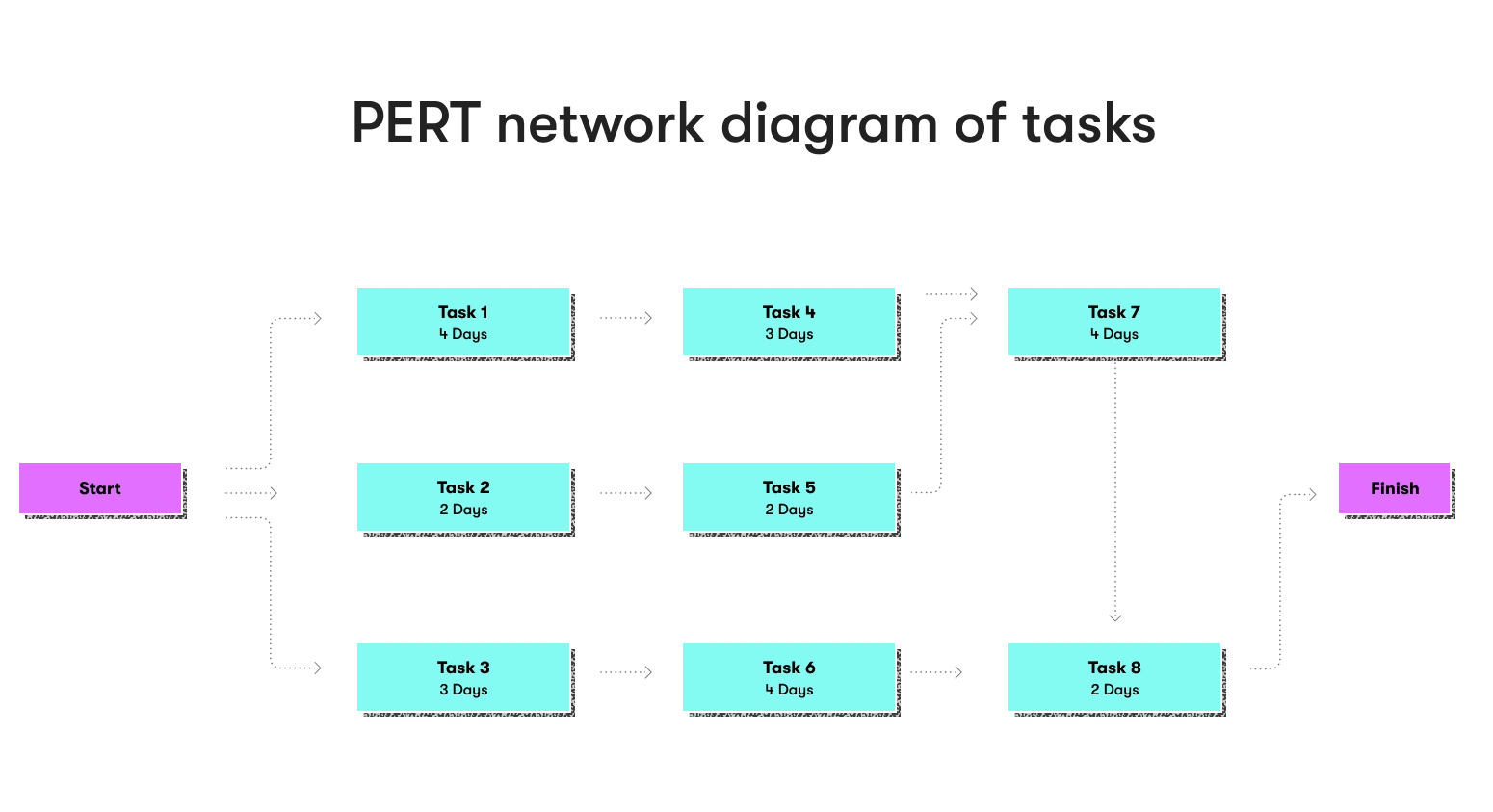In the fast-paced and dynamic realm of software development, accurately estimating the time required for a project is a critical challenge. Whether you're a developer, project manager, or a business owner, understanding how to estimate software development time is essential to keep your projects on track and within budget.
Software development time estimation is important for planning and managing resources effectively, ensuring project timelines are met, and maintaining budget control. Accurate time estimation helps stakeholders set realistic expectations, allocate tasks efficiently, and mitigate risks associated with delays. It is crucial for delivering high-quality software solutions on schedule and within scope.
Estimating software development time is a multifaceted task that involves a combination of art and science. It requires a deep understanding of the project's scope, complexity, and the skills of the development team. It's not just about making an educated guess; it's a structured process that begins with project initiation and continues throughout its lifecycle. In this comprehensive guide, we'll delve into the intricacies of software development time estimation, exploring various methods, best practices, and key factors that play a vital role in ensuring project success.
What is a time estimator?
A time estimator is an individual or tool responsible for determining the time required to complete a software development project.
At EPAM Startups & SMBs we offer a software development cost calculator tool for businesses of all sizes. Our expert project delivery managers walk our clients through the whole journey, estimating and planning before the project begins. This estimation process involves a combination of experience, data analysis, and methodologies to predict when the project will be completed. A skilled time estimator has the ability to break down a project into its essential components, analyze the variables that affect project duration, and provide a reasonable estimate that serves as the foundation for project planning and resource allocation.
SPEED UP YOUR PROJECT
With a team of our industry experts, you can cut time spent from design to launch.
How to estimate development time?

Estimating software development time involves several crucial steps. Let's explore them in more detail:
Step 1: Define the scope and complexity of the project
Before you can estimate time, it's imperative to have a clear understanding of the project's scope of work and complexity.
This initial step involves gathering detailed business information about the project, including its objectives, features, and functionalities. The more comprehensive your understanding, the more accurate your estimation will be. Scope changes are a common source of project delays, so it's crucial to establish a well-defined scope from the outset. Utilizing genAI for software development can help accurately estimate project timelines and manage scope changes efficiently.
A partner with experience working on similar projects or having done previous projects in-house can also help estimate a time frame for your project effectively.
Step 2: Create a task list
Once you have a clear project scope, the next step is to create a task list for the duration of the whole project. This task list should break down the overall project into smaller tasks and sub-tasks. Each task should be well-defined and have a clear purpose.
By breaking the project into manageable milestones, you make it easier to estimate time accurately and assign resources effectively.
Step 3: Make your own software estimate
With your task list in hand, it's time to estimate the time required for each individual task.
Several time estimation techniques are commonly used in software development, such as expert judgment, historical data analysis, and parametric modeling.
- Expert judgment involves consulting with experienced team members or a software development company who can provide insights based on their expertise.
- Historical data analysis involves reviewing past projects to identify patterns and trends that can inform your estimate.
- Parametric modeling involves using mathematical models and algorithms to calculate time based on project parameters.
Additionally, specialized software development estimation tools can be incredibly helpful in this process.
Step 4: Conduct team meetings
Collaboration is key in the software development process. Engage your team in estimation discussions to get their insights and establish project requirements.
Multiple viewpoints can lead to more accurate estimates. Team members may bring different experiences and perspectives to the table, which can help identify potential challenges and function points, or overlooked aspects of the future projects. Involving your team in the estimation process not only leads to more accurate estimates but also fosters a sense of ownership and shared responsibility for the project's success.
Step 5: Establish a project timeline
Based on the task estimates and team discussions, create a project time map that outlines when each task should be completed. Ensure that you allocate time for dependencies and contingencies. A well-structured project timeline is essential for keeping the project on track and ensuring that all deliverables are completed in the right sequence. It also helps in resource allocation and workload management, whether you are outsourcing software development or developing in-house.
Methods of estimating development time
The estimation methods for software development time can be broadly categorized as follows:
Traditional (Waterfall) methodologies
Traditional methodologies, such as the Waterfall model, involve a linear and sequential approach to the software development life cycle. In this method, time estimation is done primarily at the beginning of the project, and any changes or modifications can raise project costs and be time-consuming. Waterfall is suitable for well-defined projects with stable metrics. It works best when the project scope is clear and unlikely to change significantly.
The Waterfall approach divides the project into distinct phases, with each phase building on the previous one. It follows a sequential path from requirements gathering and design to development, testing, and deployment. Project estimation in the Waterfall model is typically done once, and any changes to the scope or requirements can be challenging to accommodate.
Agile methodologies
Agile methodologies, such as Scrum and Kanban, emphasize flexibility and adaptability. Time estimation in Agile is typically done iteratively throughout the project, allowing for changes and adjustments based on feedback. Agile is ideal for projects with scaling backlogs and a need for regular client collaboration.
Agile is well-suited to projects where the client's needs may evolve or become clearer as the project progresses. It accommodates changes more readily than the Waterfall approach and promotes frequent collaboration between the software development team and the client. Agile projects are divided into smaller, manageable iterations, often referred to as sprints, and time estimates are revisited at the start of each iteration.
PERT
PERT (Program Evaluation and Review Technique) is a project management technique that uses a probabilistic approach to estimate software engineering time. It is particularly useful for projects with a high degree of uncertainty and complexity. PERT involves creating a network diagram of tasks, where each task is associated with three time estimates: optimistic (the best-case scenario), pessimistic (the worst-case scenario), and the most likely one. Using these parametric estimates, PERT calculates a weighted average to provide a more realistic and probabilistic estimate of the project's duration.
PERT accounts for the inherent variability in task durations and allows project managers to assess the probability of meeting specific deadlines. It's a valuable approach when project timelines are subject to significant unknowns or when there are dependencies between tasks that may impact the overall schedule.
By incorporating PERT into your estimation process, you can provide stakeholders with a more nuanced understanding of the potential range of project completion dates and the associated risks.

What is software development time spent on?
Estimating software development time isn't just about the coding phase. It involves several key stages of the project:
Idea and requirements
This phase is where the project's concept is defined, and initial requirements are gathered. Clear documentation is essential to ensure accurate time estimation. At this stage, it's crucial to involve stakeholders and subject matter experts to understand the project's objectives, user needs, technology stacks and any specific business requirements.
Design and UX/UI
The design phase, which includes user interface (UI) and user experience (UX) design, can significantly impact project timelines. A well-designed, user-friendly interface is crucial for the success of software applications. UX/UI design services involve creating storypoints, wireframes, mockups, and prototypes to visualize the user experience and gather feedback from stakeholders.
Development process
The actual coding and development work is a critical part of custom software development. Choose the right technologies, programming languages, and development frameworks to optimize development time. Effective project management is essential in this phase to ensure that developers are working efficiently and that code quality is maintained.
Integrations
If your software needs to integrate with external systems or APIs, this can be a time-consuming process. Ensure that you allocate sufficient time for integrations and consider any potential challenges, such as API compatibility issues. Integrations often involve coordinating with third-party providers and testing to ensure seamless data exchange.
Testing
Thorough testing is vital to identify and rectify issues. Testing can consume a significant portion of the project timeline, especially in complex projects. It includes various types of testing, such as functional testing, performance testing, integration testing, and user acceptance testing. Effective testing helps identify and address defects, ensuring that the software functions as intended.
Post-launch maintenance
Ongoing maintenance and support after the software launch should also be factored into the time estimation. Clients often require updates, bug fixes, and ongoing technical support. Post-launch maintenance is crucial for keeping the software up-to-date, secure, and responsive to evolving user needs.
SPEED UP YOUR PROJECT TIMELINE
Boost productivity with our software development team you can trust.
Add a risk buffer
While careful planning and estimation can significantly improve the accuracy of time estimates, software development projects are inherently complex and can involve unforeseen challenges. To account for potential risks and uncertainties, it's important to include a risk buffer in your time estimation.
A risk buffer is an additional amount of time allocated to a project to accommodate unforeseen events or challenges that may cause delays. These events can include unexpected technical issues, changes in project scope, resource unavailability, or external factors beyond your control. By including a risk buffer in your estimate, you enhance the project's resilience and ensure that you have some flexibility to handle unexpected situations without derailing the entire project schedule.
The size of the risk buffer may vary based on the project's complexity and the level of uncertainty. While some projects may require a larger buffer, others may be relatively low-risk and need a smaller one. Experienced project managers often rely on historical data and industry benchmarks to determine an appropriate risk buffer for their projects.
Make room for "time eaters"
In addition to including a risk buffer, it's essential to be aware of and make room for what are sometimes referred to as "time eaters." These are unexpected events, interruptions, or distractions that can disrupt the project schedule and consume valuable development time.
Time eaters can take various forms, including:
- Scope creep: Uncontrolled changes to the project scope that can lead to increased work and delays.
- Unplanned meetings: Meetings that aren't part of the regular project schedule but are necessary to address issues or discuss changes.
- Resource conflicts: Conflicts or competing demands for key resources, such as developers, designers, or subject matter experts.
- Emergencies: Unexpected crises or urgent tasks that require immediate attention and can divert resources from the project.
- Client requests: Client requests for additional features or changes that were not initially accounted for in the project scope.
- Technical challenges: Unexpected technical issues or bugs that require extensive troubleshooting and debugging.
To make room for time eaters, it's essential to allocate some flexibility in the project schedule. While it may not be possible to predict the specific nature of these disruptions, having some buffer time built into the project timeline allows you to handle them without causing significant delays. This buffer can be separate from the risk buffer and is designed to account for the day-to-day challenges that can arise during the course of the project.
Conclusion: a journey of continuous improvement
Estimating software development time is a challenging but essential skill in the world of technology. It requires a deep understanding of project scope, methodologies, and the ability to adapt to changing circumstances. By mastering the art of estimation and incorporating best practices, you can significantly improve the accuracy of your time estimates.
Accurate time estimates not only help you deliver projects on time and within budget but also build trust with clients and stakeholders. Over time, as you learn from each project and adapt your estimation process, you'll become a more reliable and efficient project owner.

Anush has a history of planning and executing digital communications strategies with a focus on technology partnerships, tech buying advice for small companies, and remote team collaboration insights. At EPAM Startups & SMBs, Anush works closely with subject matter experts to share first-hand expertise on making software engineering collaboration a success for all parties involved.
Anush has a history of planning and executing digital communications strategies with a focus on technology partnerships, tech buying advice for small companies, and remote team collaboration insights. At EPAM Startups & SMBs, Anush works closely with subject matter experts to share first-hand expertise on making software engineering collaboration a success for all parties involved.
Explore our Editorial Policy to learn more about our standards for content creation.
read more




















